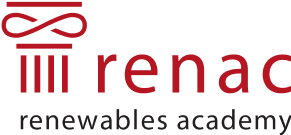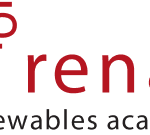This website uses cookies so that we can provide you with the best user experience possible. Cookie information is stored in your browser and performs functions such as recognising you when you return to our website and helping our team to understand which sections of the website you find most interesting and useful.
Customer-specific programmes
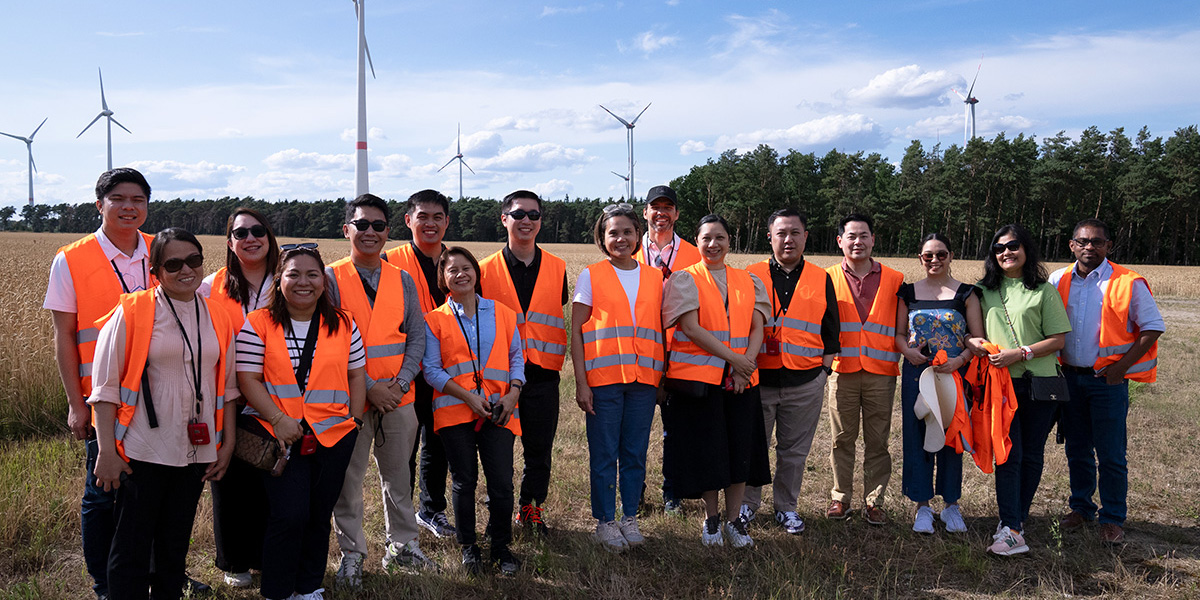
Job requirements in the green energy markets are complex and manifold. To ensure a company or organisation success, employees need extensive skills and up-to-date know-how.
RENAC customer-specific programmes offer the best way to meet participants’ training objectives:
- Analysis of participants’ capacity needs
- Selection of training contents and methods according to prior knowledge and needs
- The most suitable trainers
- Development of comprehensive materials with the highest quality standards
- Implementation of the training
Additionally, the training can be adjusted in duration and depth, organised for groups of various sizes and adapted to cover various technologies. Clients can determine when and where the training takes places.
Filter and search
Type
Name
Duration
Study time
Info
- accreditation process, accredited entities, introduction to GCF, investment criteria, project approval
hours
Content:
- Introduction to GCF
- Financing mechanisms and instruments
- Accredited entities
- Projects
Learning objectives:
After completion of this course, participants will be able to:
- Draft a concept on how to receive funding from the Green Climate Fund
- Design a project plan for accreditation and funding application
- Specify further training needs from the GCF Readiness Support team
Target group:
This training suits those who
- Plan to get in touch with the Green Climate Fund for any kind of cooperation
- Want to receive funding from an international organization for climate mitigation or climate adaptation projects.
- Are responsible for climate finance programmes within their financial institution
hours
Content:
• Internationally applied solutions that enable the distribution grid operator to achieve a high and further increasing feed-in of power from rooftop solar into the grid.
• Voltage in low and medium voltage grid above/below acceptable values
• Lack of remote access to Roof Top Systems (RTS) for re-dispatch, power curtailment, reactive power management, grid maintenance / switch off PV power feed-in
• Coordination of short term RTS PV forecast with grid forecast
• DSO need to call RTS owners and negotiate with them to switch off their systems for a certain time
• DSO need to go to RTS sites, request access and switch off the RTS manually
• Lack of technical data about connected RTS
• Management of data of large number of RTS (size, position, accounting, electrical behaviour, grid code compliance, etc.)
• Reverse power flow
• Increased loss of power
• Transformer overload
• Adaptation of protection settings
• Others that are relevant for distribution grid operators including voltage stability, redispatch, communication and control, thermal limits, line rating, maintenance, etc
Learning objectives:
After completing this course, participants will be able to:
• identify, analyse, compile and describe situations that typically occur in low and medium voltage distribution grids with high and further increasing penetration of rooftop solar (typical situations) as well as internationally implemented solutions
Target group:
This course suits those who
• work at low and medium voltage dispatch centres which are responsible for grid operation
- annual energy production, balancing power needs, offshore wind trends, short-term forecast, technology, wind resource
Content:
Module 1: Wind resource
Module 2: Technology
Module 3: Offshore wind trends
Module 4: Annual energy generation
Module 5: Economics
Module 6: Short term wind power forecast and balancing power needs (power system integration)
Learning objectives:
Module 1: Wind resource
A participant who met the objectives of this module should be able to
- apply the wind power density calculation, the vertical wind shear profile and surface roughness
- apply the mathematical description of wind shear with the logarithmic law and the Hellmann power law and conduct the calculation of wind shear exponent and roughness length with measured wind speed data
- describe a wind speed distribution with the Weibull equation with shape parameter and scale parameter and understand the shape of different wind speed distribution curves
Module 2: Technology
A participant who met the objectives of this module should be able to
- explain the standard horizontal-axis wind turbine configuration
- recognize the development wind turbine rotor diameter and hub height and understand the advantages and disadvantages of longer rotor blades
- calculate the specific wind turbine power
- explain wind farm generator type “double fed induction generator” and type “fully converted turbine”
Module 3: Offshore wind trends
A participant who met the objectives of this module should be able to
- describe actual trends regarding turbine size, wind farm location, wind turbine rated capacity, wind farm size, water depth and distance to shore and floating wind turbines.
- explain industry activity and the supply chain regarding turbine manufacturers, substructures, foundations, vessels and cables
- describe investment and operation cost trends
Module 4: Annual energy generation
A participant who met the objectives of this module should be able to
- distinguish between free, gross and net annual energy generation
- describe and illustrate the characteristics of a wind turbine power curve
- calculate the annual wind energy yield using measured wind speed data and wind turbine power curves and compare outputs from different turbines
- apply full load hours and capacity factors to estimate the annual energy generation
Module 5: Economics
A participant who met the objectives of this module should be able to
- define levelised cost of energy (LCOE) and internal rate of return (IRR)
- describe cost trends and drivers for LCOE of wind power
- calculate fundamentals regarding debt, equity, IRR, LCOE of wind projects
Module 6: Short term wind power forecast and balancing power needs (power system integration)
A participant who met the objectives of this module should be able to
- name fundamental steps of short term wind power forecast and distinguish between a physical and statistical approach for wind power forecast
- define short term wind power forecast errors
explain the fundamentals of the methodology to calculate the balancing power needs of power supply systems with wind power
Target group:
The training is targeted at
- professionals with no or little wind power knowledge and bachelor degree or comparable professional experience
- persons who would like to learn fundamentals of the annual energy generation, wind resource, technology, offshore wind power trends, economics and power system integration (short term wind forecast and balancing power needs)
- economics, environmental parameters, power curves, resource assessment, site assessment, technology
Content:
- Market development
- Annual energy production
- CAPEX, OPEX and LCOE
- Wind power technology (rotor blades, pitch control, tip speed ratio, power coefficient, gear box, gear-less concepts, generator and inverter concepts)
- Power output control power curves
- Wind resource assessment and measurement equipment
- Wind power density, wind shear profiles, wind speed variability and wind speed distribution,wind speed extrapolation with logarithmic law and the power law
- Wind farm planning method
- Site assessment and sites suitable for wind energy
- Global IEC quality standards
- Environment, shadow and noise
- Software tools overview for professional energy yield calculation and project planning
Learning objectives:
After the seminar participants will be able to:
- describe the development of wind power in different regions of the world
- assess the wind resource calculate the wind energy yield of a wind farm and individual wind turbines
- compare the energy output of different wind turbines for a specific site
- recognize the effect of various losses on the energy yield
- apply fundamental steps of wind farm planning and avoiding environmental conflicts
- explain the design of wind turbines with/without gear boxes
- apply a methodology to identify areas suitable for wind farms
Target group:
The course is for persons who like to start a job in the wind sector or to get familiar with the learning objectives.
- country case studies, financing, Ghana, modelling tools, Sub-Sahara Africa, Uganda
hours
Content:
- Overview of the Green Finance approach
- Modelling tools for PV and biogas technologies
- Tool application: Case study on a PV hybrid system in Uganda
- Tool application: Case study on a biogas system in Ghana
- Comparison of technologies for RE systems
- Learnings and recommendations for further steps
Learning objectives:
After completion of this course, participants will be able to:
- Understand the Green Recovery approach in energy project developments
- Familiarise with key operational and financial output parameters used by RENAC in Green Recovery
- Recognise the key operational and financial output parameters that can be obtained with RENAC “RE Project Evaluator” modelling tools of energy projects in the context of Green Recovery
- Analyse the results of several case studies based on PV grid connected, PV hybrid, biogas and solid biomass technologies.
- Compare the results from the application of the technologies above and recommend their selection in commercial and industrial case studies.
Target group:
This training suits professionals who
- Intend to introduce and enhance the financing of green energy systems in their financial institution (e.g. bank managers and staff);
- Intend to promote green energy finance in the financial sector (e.g. policy and decision makers, public organisations)
- Aim at promoting investments in green energy systems among potential investors in the SME sector (e.g. project developers, representatives from associations, consultancies)
- Are potential investors for green energy systems (e.g. SMEs, large cooperatives, project developers)
- outage model, purposes, reserves types, stochastic functions
hours
Content:
Balancing power: purpose, types and definitions
Calculation model
Supply of balancing power
Learning objectives:
After completing this course, participants will be able to:
- Explain the necessity of balancing power and the role of the grid operator
- Distinguish concepts of primary reserve, secondary reserve and minute reserve
- Determine balancing power requirements with probability functions
- Describe auctioning procedures and the Merit Order concept
Target group:
Professionals from the energy sector (engineers)
- construction insurance, insurance as credit collateral, operational insurance, scope of cover, typical clauses
hours
Content:
• Stakeholders and at-risk project factors
• Taking collateral in insurance contracts
• Risk and related insurance cover
• Technology-specific damages and insurance requirements
• Political risk insurance
Learning objectives:
After completion of this course, participants will be able to:
- Illustrate endangered RE project factors and distinguish, which types of risk are insurable and in which cases other risk management alternatives need to be pursued
- Define typical RE project stakeholders and their insurable interests and cover options
- Classify the risks that are to be insured in RE projects under standard market conditions
- Propose a suitable insurance programme for renewable energy projects based on general best market practice in an international context
Target group:
This training suits those who
• Are responsible for RE project development and finance
• Need to secure bankable insurance cover for a large-scale RE projects
• Have to check upon bankability of insurance cover from the perspective of a lender for RE projects
- contractual arrangements, guarantee schemes, incentives, maintenance strategies
hours
Content:
- O&M Strategies – Photovoltaic Power Plants
- O&M Strategies – Wind Farms
- O&M Strategies – Biogas Plants
Learning objectives:
After completion of this course, participants will be able to:
- Understand and explain the market standards related to long-term bankable O&M strategies for different technologies
- give reasons why financing partners have an interest in the performance reporting of an energy project
Target group:
This training suits professionals in the financial sector involved or interested in RE project finance who
- Have to develop a bankable O&M concept and present it to the lenders or investors
- Need to assess O&M strategies of RE projects under a due diligence process
- Are interested in O&M strategies of large-scale RE projects in general
- economics, method for sizing, modelling, standards and norms, time-series simulation
hours
Content:
• BESS sizing for ancillary services
• BESS economics in ancillary services
• BESS performance
Learning objectives:
After completing this course, participants will be able to:
- explain why small amounts of battery energy storage systems (bess) in ancillary services can reduce the need for thermal must-run power station fraction,
- explain when the sizing of a bess is first needed,
- identify relevant sources for requirements to size a bess for ancillary services,
- carry out a basic sizing methodology, and
- extract relevant information from the sizing to evaluate a BESS business case.
Target group:
This course suits those who
- Are involved in the planning of ancillary services
- Are interested in the rationale for sizing battery energy storage systems for ancillary services
- anaerobic digestion, biogas utilisation, biogas yield, digestate, input substrates
hours
Content:
• Biogas and its benefits
• Biogas production
• Biogas plant output
• Biogas system classification
• Economic and environmental aspects
Learning objectives:
After completion of the course, participants will be able to:
- Describe the range of applications for biogas systems
- Explain the relevance of biogas in the energy mix
- Classify the most common types of biogas systems and their components, purpose and output
- Explain a biogas plant’s role in transforming organic waste into organic fertiliser
- Describe all the logistics required to provide the needed substrates for a biogas system
- Analyse the impact of different input parameters on the power output of biogas systems
- Evaluate biogas systems based on economic and environmental aspects
Target group:
Anyone who is interested in renewable energy technologies
- country case studies, risk assessment
hours
Content:
- Introduction and fundamentals of diesel hybrid technologies
- Applications of PV-diesel hybrid systems
- Environmental and risk assessment
- Design and dimensioning of hybrid systems
- Financial analysis of hybrid systems
- Installation and maintenance of hybrid systems
Learning objectives:
After completion of this course, participants will be able to:
- Understand advantages of energy system hybridisation
- Learn about working principles of PV-diesel hybrid systems;
- Review market opportunities and trends for hybrid systems in the Sub-Saharan Africa context;
- Analyse main aspects to take into account for PV-diesel hybrid system design;
Target group:
This training suits professionals who
- Intend to introduce and enhance the financing of green energy systems in their financial institution (e.g. bank managers and staff);
- Intend to promote green energy finance in the financial sector (e.g. policy and decision makers, public organisations)
- Aim at promoting investments in green energy systems among potential investors in the SME sector (e.g. project developers, representatives from associations, consultancies)
- Are potential investors for green energy system, specifically hybrid energy applications (e.g. SMEs, large cooperatives, project developers)
- biomass recources, combined heat and power (CHP) plants, combustion, district heating, solid biomass
Content:
- Resources
- Processing: thermo-chemical conversion, pyrolysis, gasification
- Biomass technologies: biomass heat and power plants, biomass heating plants
- Project development and implementation
- Operation and Maintenance (O&M) of biomass heat and power plants
- Economics
- Required legal frameworks and support mechanisms
- Case study exercises
- Excursion to outstanding biomass projects
Learning objectives:
After the seminar participants will be able to:
- Classify the different resources of biomass as well as different processing technologies
- Evaluate economic and technical feasibility of biomass projects
- Discuss legal requirements and support mechanisms
- Debate the advantages and challenges when using biomass as an energy resource
Target group:
- Project developers or engineers who want to expand their field of activities
- Employees of public authorities, ministries and governmental and non governmental organisations
- Farmers interested in Biomass Technology
Content:
- Introduction to GCF
- Financing mechanisms and instruments
- Accredited entities
- Projects
Learning objectives:
After completion of this course, participants will be able to:
- Draft a concept on how to receive funding from the Green Climate Fund
- Design a project plan for accreditation and funding application
- Specify further training needs from the GCF Readiness Support team
Target group:
This training suits those who
- Plan to get in touch with the Green Climate Fund for any kind of cooperation
- Want to receive funding from an international organization for climate mitigation or climate adaptation projects.
- Are responsible for climate finance programmes within their financial institution
Content:
• Internationally applied solutions that enable the distribution grid operator to achieve a high and further increasing feed-in of power from rooftop solar into the grid.
• Voltage in low and medium voltage grid above/below acceptable values
• Lack of remote access to Roof Top Systems (RTS) for re-dispatch, power curtailment, reactive power management, grid maintenance / switch off PV power feed-in
• Coordination of short term RTS PV forecast with grid forecast
• DSO need to call RTS owners and negotiate with them to switch off their systems for a certain time
• DSO need to go to RTS sites, request access and switch off the RTS manually
• Lack of technical data about connected RTS
• Management of data of large number of RTS (size, position, accounting, electrical behaviour, grid code compliance, etc.)
• Reverse power flow
• Increased loss of power
• Transformer overload
• Adaptation of protection settings
• Others that are relevant for distribution grid operators including voltage stability, redispatch, communication and control, thermal limits, line rating, maintenance, etc
Learning objectives:
After completing this course, participants will be able to:
• identify, analyse, compile and describe situations that typically occur in low and medium voltage distribution grids with high and further increasing penetration of rooftop solar (typical situations) as well as internationally implemented solutions
Target group:
This course suits those who
• work at low and medium voltage dispatch centres which are responsible for grid operation
Content:
Module 1: Wind resource
Module 2: Technology
Module 3: Offshore wind trends
Module 4: Annual energy generation
Module 5: Economics
Module 6: Short term wind power forecast and balancing power needs (power system integration)
Learning objectives:
Module 1: Wind resource
A participant who met the objectives of this module should be able to
- apply the wind power density calculation, the vertical wind shear profile and surface roughness
- apply the mathematical description of wind shear with the logarithmic law and the Hellmann power law and conduct the calculation of wind shear exponent and roughness length with measured wind speed data
- describe a wind speed distribution with the Weibull equation with shape parameter and scale parameter and understand the shape of different wind speed distribution curves
Module 2: Technology
A participant who met the objectives of this module should be able to
- explain the standard horizontal-axis wind turbine configuration
- recognize the development wind turbine rotor diameter and hub height and understand the advantages and disadvantages of longer rotor blades
- calculate the specific wind turbine power
- explain wind farm generator type “double fed induction generator” and type “fully converted turbine”
Module 3: Offshore wind trends
A participant who met the objectives of this module should be able to
- describe actual trends regarding turbine size, wind farm location, wind turbine rated capacity, wind farm size, water depth and distance to shore and floating wind turbines.
- explain industry activity and the supply chain regarding turbine manufacturers, substructures, foundations, vessels and cables
- describe investment and operation cost trends
Module 4: Annual energy generation
A participant who met the objectives of this module should be able to
- distinguish between free, gross and net annual energy generation
- describe and illustrate the characteristics of a wind turbine power curve
- calculate the annual wind energy yield using measured wind speed data and wind turbine power curves and compare outputs from different turbines
- apply full load hours and capacity factors to estimate the annual energy generation
Module 5: Economics
A participant who met the objectives of this module should be able to
- define levelised cost of energy (LCOE) and internal rate of return (IRR)
- describe cost trends and drivers for LCOE of wind power
- calculate fundamentals regarding debt, equity, IRR, LCOE of wind projects
Module 6: Short term wind power forecast and balancing power needs (power system integration)
A participant who met the objectives of this module should be able to
- name fundamental steps of short term wind power forecast and distinguish between a physical and statistical approach for wind power forecast
- define short term wind power forecast errors
explain the fundamentals of the methodology to calculate the balancing power needs of power supply systems with wind power
Target group:
The training is targeted at
- professionals with no or little wind power knowledge and bachelor degree or comparable professional experience
- persons who would like to learn fundamentals of the annual energy generation, wind resource, technology, offshore wind power trends, economics and power system integration (short term wind forecast and balancing power needs)
Content:
- Market development
- Annual energy production
- CAPEX, OPEX and LCOE
- Wind power technology (rotor blades, pitch control, tip speed ratio, power coefficient, gear box, gear-less concepts, generator and inverter concepts)
- Power output control power curves
- Wind resource assessment and measurement equipment
- Wind power density, wind shear profiles, wind speed variability and wind speed distribution,wind speed extrapolation with logarithmic law and the power law
- Wind farm planning method
- Site assessment and sites suitable for wind energy
- Global IEC quality standards
- Environment, shadow and noise
- Software tools overview for professional energy yield calculation and project planning
Learning objectives:
After the seminar participants will be able to:
- describe the development of wind power in different regions of the world
- assess the wind resource calculate the wind energy yield of a wind farm and individual wind turbines
- compare the energy output of different wind turbines for a specific site
- recognize the effect of various losses on the energy yield
- apply fundamental steps of wind farm planning and avoiding environmental conflicts
- explain the design of wind turbines with/without gear boxes
- apply a methodology to identify areas suitable for wind farms
Target group:
The course is for persons who like to start a job in the wind sector or to get familiar with the learning objectives.
Content:
- Overview of the Green Finance approach
- Modelling tools for PV and biogas technologies
- Tool application: Case study on a PV hybrid system in Uganda
- Tool application: Case study on a biogas system in Ghana
- Comparison of technologies for RE systems
- Learnings and recommendations for further steps
Learning objectives:
After completion of this course, participants will be able to:
- Understand the Green Recovery approach in energy project developments
- Familiarise with key operational and financial output parameters used by RENAC in Green Recovery
- Recognise the key operational and financial output parameters that can be obtained with RENAC “RE Project Evaluator” modelling tools of energy projects in the context of Green Recovery
- Analyse the results of several case studies based on PV grid connected, PV hybrid, biogas and solid biomass technologies.
- Compare the results from the application of the technologies above and recommend their selection in commercial and industrial case studies.
Target group:
This training suits professionals who
- Intend to introduce and enhance the financing of green energy systems in their financial institution (e.g. bank managers and staff);
- Intend to promote green energy finance in the financial sector (e.g. policy and decision makers, public organisations)
- Aim at promoting investments in green energy systems among potential investors in the SME sector (e.g. project developers, representatives from associations, consultancies)
- Are potential investors for green energy systems (e.g. SMEs, large cooperatives, project developers)
Content:
Balancing power: purpose, types and definitions
Calculation model
Supply of balancing power
Learning objectives:
After completing this course, participants will be able to:
- Explain the necessity of balancing power and the role of the grid operator
- Distinguish concepts of primary reserve, secondary reserve and minute reserve
- Determine balancing power requirements with probability functions
- Describe auctioning procedures and the Merit Order concept
Target group:
Professionals from the energy sector (engineers)
Content:
• Stakeholders and at-risk project factors
• Taking collateral in insurance contracts
• Risk and related insurance cover
• Technology-specific damages and insurance requirements
• Political risk insurance
Learning objectives:
After completion of this course, participants will be able to:
- Illustrate endangered RE project factors and distinguish, which types of risk are insurable and in which cases other risk management alternatives need to be pursued
- Define typical RE project stakeholders and their insurable interests and cover options
- Classify the risks that are to be insured in RE projects under standard market conditions
- Propose a suitable insurance programme for renewable energy projects based on general best market practice in an international context
Target group:
This training suits those who
• Are responsible for RE project development and finance
• Need to secure bankable insurance cover for a large-scale RE projects
• Have to check upon bankability of insurance cover from the perspective of a lender for RE projects
Content:
- O&M Strategies – Photovoltaic Power Plants
- O&M Strategies – Wind Farms
- O&M Strategies – Biogas Plants
Learning objectives:
After completion of this course, participants will be able to:
- Understand and explain the market standards related to long-term bankable O&M strategies for different technologies
- give reasons why financing partners have an interest in the performance reporting of an energy project
Target group:
This training suits professionals in the financial sector involved or interested in RE project finance who
- Have to develop a bankable O&M concept and present it to the lenders or investors
- Need to assess O&M strategies of RE projects under a due diligence process
- Are interested in O&M strategies of large-scale RE projects in general
Content:
• BESS sizing for ancillary services
• BESS economics in ancillary services
• BESS performance
Learning objectives:
After completing this course, participants will be able to:
- explain why small amounts of battery energy storage systems (bess) in ancillary services can reduce the need for thermal must-run power station fraction,
- explain when the sizing of a bess is first needed,
- identify relevant sources for requirements to size a bess for ancillary services,
- carry out a basic sizing methodology, and
- extract relevant information from the sizing to evaluate a BESS business case.
Target group:
This course suits those who
- Are involved in the planning of ancillary services
- Are interested in the rationale for sizing battery energy storage systems for ancillary services
Content:
• Biogas and its benefits
• Biogas production
• Biogas plant output
• Biogas system classification
• Economic and environmental aspects
Learning objectives:
After completion of the course, participants will be able to:
- Describe the range of applications for biogas systems
- Explain the relevance of biogas in the energy mix
- Classify the most common types of biogas systems and their components, purpose and output
- Explain a biogas plant’s role in transforming organic waste into organic fertiliser
- Describe all the logistics required to provide the needed substrates for a biogas system
- Analyse the impact of different input parameters on the power output of biogas systems
- Evaluate biogas systems based on economic and environmental aspects
Target group:
Anyone who is interested in renewable energy technologies
Content:
- Introduction and fundamentals of diesel hybrid technologies
- Applications of PV-diesel hybrid systems
- Environmental and risk assessment
- Design and dimensioning of hybrid systems
- Financial analysis of hybrid systems
- Installation and maintenance of hybrid systems
Learning objectives:
After completion of this course, participants will be able to:
- Understand advantages of energy system hybridisation
- Learn about working principles of PV-diesel hybrid systems;
- Review market opportunities and trends for hybrid systems in the Sub-Saharan Africa context;
- Analyse main aspects to take into account for PV-diesel hybrid system design;
Target group:
This training suits professionals who
- Intend to introduce and enhance the financing of green energy systems in their financial institution (e.g. bank managers and staff);
- Intend to promote green energy finance in the financial sector (e.g. policy and decision makers, public organisations)
- Aim at promoting investments in green energy systems among potential investors in the SME sector (e.g. project developers, representatives from associations, consultancies)
- Are potential investors for green energy system, specifically hybrid energy applications (e.g. SMEs, large cooperatives, project developers)
Content:
- Resources
- Processing: thermo-chemical conversion, pyrolysis, gasification
- Biomass technologies: biomass heat and power plants, biomass heating plants
- Project development and implementation
- Operation and Maintenance (O&M) of biomass heat and power plants
- Economics
- Required legal frameworks and support mechanisms
- Case study exercises
- Excursion to outstanding biomass projects
Learning objectives:
After the seminar participants will be able to:
- Classify the different resources of biomass as well as different processing technologies
- Evaluate economic and technical feasibility of biomass projects
- Discuss legal requirements and support mechanisms
- Debate the advantages and challenges when using biomass as an energy resource
Target group:
- Project developers or engineers who want to expand their field of activities
- Employees of public authorities, ministries and governmental and non governmental organisations
- Farmers interested in Biomass Technology
Target Groups
Public sector officials for legal frameworks, regulation and implementation:

- Ministries
- Regulators
- Local administrations
Multipliers and development organisations:

- Development corporations
- Energy agencies
- International financing institutions
- NGOs
Private sector:

- Project developers
- System integrators
- Engineers and technicians
- Investors
- Financing institutions
- Grid operators
Capacity building and dissemination sector:

- Public and private training institutions
- Vocational training institutions
- Universities
Value Chain
We design and implement customer-specific programmes and services along the value chain in a holistic concept.
Our approach to Renewable Energy (RE) and Energy Efficiency (EE) is manifold: technology related knowledge is the basis and then each RENAC training and service focus on technical, economic, legal or project related aspects according to the target group. RENAC is also very active in international business matchmaking and market development services.
In our capacity building services we supply a variety of programmes to train trainers, to build training centres and to establish quality assurance processes.
Our Training Concept
Customer-Specific Programmes – what does it mean?
We offer customer-specific programmes according to client needs and participant job requirements in all green energy sectors. Based on an analysis of requested knowledge or specific job tasks and the level of existing knowledge, we develop a training concept proposal.
The concept includes recommendations for online or in-person trainings, or both. We develop the training concept taking the given resources on budget and learning time into account. After feedback from the client, we fine-tune the concept for approval.
Depending on the needs of our clients, we offer different levels of trainings (basic, intermediate, and advanced).
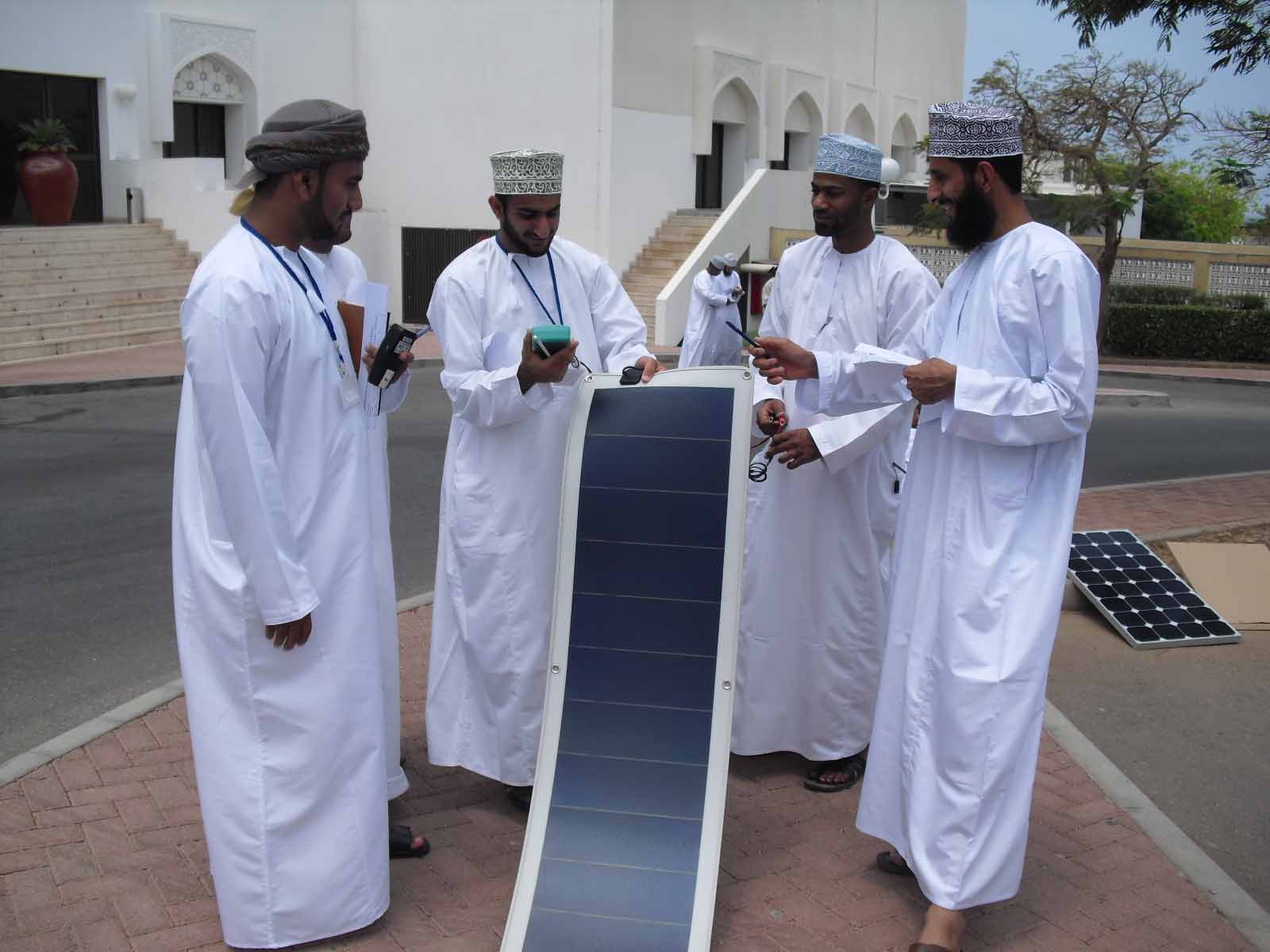
Service Catalogue
Find detailed information about the programme that best aligns with your needs and preferences.
Are you interested in a Customer-specific programmes?
Kindly fill out this questionnaire and attach it to the form on the right:
© 2024 | Renewables Academy (RENAC) AG
